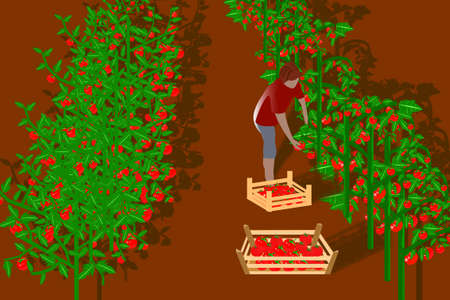Overview of Sowing in Controlled Environments
Sowing seeds in controlled environments such as greenhouses and polytunnels has become increasingly popular across the UK, particularly for gardeners and growers seeking to extend the growing season and enhance germination rates. Unlike open-field sowing, these protected structures offer a unique microclimate that can be carefully managed, providing an array of benefits that are especially relevant given the often unpredictable British weather. In the context of the UK climate, where cool temperatures, high rainfall, and short daylight hours frequently challenge traditional outdoor sowing methods, utilising greenhouses and polytunnels enables greater control over temperature, humidity, and light exposure. This improved environment minimises risks associated with late frosts, heavy downpours, or sudden cold snaps—common issues that can easily disrupt or delay germination outdoors. Moreover, controlled environments facilitate earlier sowing in spring or even late winter, allowing growers to get a valuable head start on the season and produce stronger, healthier seedlings ready for transplanting when conditions outside become favourable. These advantages make greenhouses and polytunnels indispensable tools for both amateur enthusiasts and commercial horticulturists aiming for reliable and successful seed germination throughout the year.
Choosing Suitable Sowing Methods
When considering sowing methods for greenhouse and polytunnel environments in the UK, growers are typically faced with a choice between direct sowing and modular or tray sowing. Each method has distinct advantages and limitations depending on the crop type, seasonal conditions, and available space.
Direct Sowing vs Modular and Tray Sowing: Key Comparisons
| Sowing Method | Main Advantages | Main Limitations | Best Suited Crops (UK) | Seasonal Considerations |
|---|---|---|---|---|
| Direct Sowing | Less transplant shock; simpler process; quicker establishment in situ. | Less control over spacing; higher risk of uneven germination or pest damage. | Carrots, parsnips, radishes, salad leaves. | Best during late spring to early summer when soil is warm. |
| Modular/Tray Sowing | Greater control over germination conditions; easier to handle delicate seedlings; efficient use of space. | Transplant shock possible; more labour intensive at transplant stage. | Lettuce, brassicas (cabbage, kale), tomatoes, peppers, aubergines. | Ideal for late winter through spring to give crops a head start. |
Advice Tailored to Common UK Crops
For cool-season crops like brassicas, starting seeds in trays or modules in February or March allows for strong seedling development before the final planting out in April or May. Warm-season vegetables such as tomatoes and peppers benefit from early modular sowing indoors from January onwards to maximise the shorter British growing season. Conversely, root vegetables like carrots and parsnips prefer direct sowing as they dislike root disturbance. Salad greens can be either directly sown in succession for continuous harvests or started in trays for early crops.
Local Tips for Success
- Avoid waterlogged composts: Use free-draining seed composts for trays and modules to prevent damping-off disease.
- Label each tray clearly: With multiple varieties on the go, especially in spring, accurate labelling prevents confusion later in the season.
- Harden off seedlings: Gradually acclimatise modular-sown plants to outdoor temperatures before transplanting into their final positions in the greenhouse or polytunnel.
Sowing Method Selection Summary Table
| Crops | Sowing Recommendation |
|---|---|
| Lettuce, Cabbage, Kale | Modular/tray sowing (late winter/early spring) |
| Tomatoes, Peppers, Aubergines | Modular/tray sowing (January-March) |
| Carrots, Parsnips, Radishes | Direct sowing (spring onwards) |
| Spinach, Beetroot | Easily adapted to both methods depending on space and preference |
This careful consideration of sowing methods tailored to specific crops and seasons enables gardeners across the UK to optimise germination rates and establish healthy seedlings ready for successful cultivation under cover.

3. Seed Preparation and Pre-Treatment
Proper seed preparation and pre-treatment are crucial steps in achieving high germination rates, particularly within the controlled environments of greenhouses and polytunnels commonly found across the UK. While some seeds will readily sprout with minimal intervention, others benefit significantly from specific pre-sowing treatments designed to break natural dormancy mechanisms or enhance water uptake. Here, we discuss three main techniques—soaking, scarification, and stratification—tailored to British horticultural contexts.
Soaking
Soaking is a straightforward method involving the immersion of seeds in water for a set period, usually 12–24 hours, at room temperature. This softens tough seed coats and allows for quicker absorption of moisture, effectively kickstarting the germination process. Many vegetable seeds popular in UK gardens—such as beans, peas, and sweetcorn—respond well to soaking. Care should be taken not to soak small or fine seeds for too long as this can lead to rot or fungal issues, especially in the humid environment of a polytunnel.
Scarification
Scarification involves physically breaking down the hard outer coating of certain seeds, such as sweet peas (Lathyrus odoratus) or lupins, which are beloved features in many British allotments and cottage gardens. Methods include gently nicking the seed coat with a knife or rubbing seeds between sheets of sandpaper. The aim is to allow water to penetrate more easily without damaging the inner seed. This technique can be particularly useful when sowing perennial species under glass where uniform germination is desired.
Stratification
Some native British plants and hardy ornamentals require cold stratification—a process that mimics natural winter conditions—before they will germinate reliably. Seeds are mixed with moist compost or vermiculite and placed in a sealed bag or container, then refrigerated for several weeks. Popular examples include foxglove (Digitalis purpurea), primrose (Primula vulgaris), and many tree species. For greenhouse growers aiming to propagate woodland natives or extend flowering seasons, proper stratification ensures timely and even emergence.
Best Practices in British Conditions
It’s important to match your pre-treatment method with both the species being sown and the prevailing microclimate of your greenhouse or polytunnel. Always consult reliable sources such as the RHS guidelines or local gardening groups for crop-specific advice. Additionally, ensure all equipment is clean to reduce disease risk—a frequent concern given the damp UK climate—and label treated batches clearly for easy tracking.
Summary
Incorporating these seed preparation techniques into your sowing regime can greatly improve success rates and help maintain healthy plant stock year after year. By considering traditional British horticultural practices alongside modern methods, growers can make informed decisions tailored to their unique growing environments.
4. Optimising Sowing Medium and Containers
Choosing the right sowing medium and containers is essential for successful seed germination in both greenhouse and polytunnel environments. The selection not only influences seedling health but also impacts sustainability and resource efficiency, which are increasingly important in the UK context.
Composts and Soil Mixes: What to Look For
Seedlings thrive in a fine-textured, well-draining, yet moisture-retentive medium. In Britain, peat-free composts have gained popularity due to environmental concerns over peat extraction. A typical seed-starting mix might include:
| Component | Function | Sustainability Note |
|---|---|---|
| Coco coir | Retains moisture without waterlogging; light texture aids root development | Renewable alternative to peat; check for ethical sourcing |
| Composted green waste | Provides nutrients and organic matter | Often locally produced; reduces landfill waste |
| Horticultural sand or grit | Improves drainage and aeration | UK-sourced options available; use sparingly to avoid excessive mining impact |
| Vermiculite/perlite | Keeps mix light and airy, improves water retention (vermiculite) or drainage (perlite) | Non-renewable but effective in small quantities; alternatives like rice hulls emerging |
DIY vs Ready-Made Mixes
If you prefer control over ingredients, mixing your own sowing medium allows you to utilise local materials, such as garden compost (well-rotted and sieved), leaf mould, or even spent mushroom compost blended with sand. For convenience, many UK garden centres offer pre-mixed, peat-free sowing composts specifically formulated for seed starting.
Selecting Sustainable Containers
The choice of container can significantly affect both germination success and your environmental footprint. Traditional plastic trays are widely used but often single-use and non-recyclable. Consider these alternatives:
| Container Type | Description & Advantages | Sustainability Aspect |
|---|---|---|
| Biodegradable pots (e.g., coir, paper, cardboard) | Transplant directly into soil; roots grow through material | Reduce plastic waste; often made from renewable resources |
| Reusable trays & modules (sturdy plastic or recycled material) | Withstand multiple seasons if cleaned properly between uses | Cuts down on single-use plastics; choose recycled content when possible |
| Repurposed household items (yoghurt pots, egg cartons) | An economical option that keeps waste out of landfill temporarily | Promotes circular use of materials; ensure adequate drainage holes are added |
| Soil blocks (formed using a press tool) | No pot required; minimises transplant shock for seedlings | No waste generated; initial investment in blocker tool pays off over time |
Troubleshooting Common Issues with Media and Containers
- If seedlings appear leggy or dampened-off, check that your medium drains freely yet holds enough moisture. Too much water retention can promote fungal issues.
- Avoid reusing old compost or dirty trays without sterilising—they can harbour pests and diseases detrimental to young plants.
- If using home-made mixes, sieve all components finely for small-seeded crops to ensure good seed-soil contact.
- Label containers clearly with variety names and sowing dates—organisation is key in busy spring periods!
Selecting the right combination of sustainable composts and containers not only supports vigorous germination but also aligns with British gardening values of stewardship and resourcefulness. Experimentation with local materials—always guided by attention to drainage, texture, and hygiene—can yield excellent results while reducing environmental impact.
5. Environmental Controls for Optimal Germination
Ensuring optimal environmental conditions is pivotal for successful germination in both greenhouse and polytunnel settings across the UK. Given the variability of British weather, growers must pay close attention to three key factors: temperature, moisture, and light. Each of these elements plays a critical role in seedling health and uniform emergence.
Temperature Regulation
Most seeds have an ideal temperature range for germination, typically between 18°C and 24°C for many common vegetable crops grown in the UK. In greenhouses, thermostatically controlled heaters or propagators are commonly used to maintain consistent warmth. For polytunnels, thermal fleece or bubble insulation can help buffer against night-time temperature drops, which are frequent during early spring and late autumn. Regularly monitor soil and air temperatures with reliable thermometers placed at seed level for accuracy.
Moisture Management
Uniform moisture is essential; both overwatering and underwatering can hinder germination rates or cause damping-off disease. Use a fine rose watering can or misting system to ensure gentle, even watering without disturbing seeds. In polytunnels, capillary matting beneath trays helps maintain steady moisture levels. Mulching with vermiculite or covering with clear plastic can prevent rapid evaporation and retain humidity, especially in windy or sunny conditions typical in the British Isles.
Light Control
For seeds that require light to germinate (such as lettuce), position trays near south-facing windows in greenhouses or use supplemental LED grow lights to extend daylight hours during gloomy winter days. Conversely, seeds needing darkness should be covered with an appropriate depth of compost or blackout material until germination occurs. Adjustable shading systems in greenhouses help prevent overheating on rare hot days while maximising available light on dull ones—a particular challenge in the UK climate.
Best Practice Recommendations
- Check environmental parameters daily using reliable instruments.
- Ventilate greenhouses and polytunnels regularly to prevent fungal issues while maintaining warmth.
- Adapt watering frequency according to seasonal changes—less frequent in winter, more attentive during dry spells.
Summary
Adopting precise environmental controls tailored to local conditions is a hallmark of successful UK propagation practice. By carefully regulating temperature, moisture, and light within your protected growing spaces, you lay a strong foundation for vigorous seedling development and ultimately a thriving crop.
6. Common Germination Challenges and Solutions
Even with careful sowing methods in a greenhouse or polytunnel, growers in the UK often encounter germination issues that can hinder success. This section addresses practical troubleshooting for three of the most frequent challenges: damping-off, poor germination rates, and uneven seedling growth.
Damping-Off: Causes and Remedies
Damping-off is a common fungal problem, particularly in the cool, humid conditions typical of British springs. Seedlings suddenly collapse or rot at soil level, often due to overwatering, poor air circulation, or contaminated compost. To prevent this:
- Use fresh, sterile seed compost designed for propagation.
- Avoid overwatering; keep the surface just moist rather than wet.
- Increase airflow by spacing trays and using ventilators on mild days.
- If an outbreak occurs, remove affected seedlings immediately and treat the remaining batch with a gentle fungicide suitable for edible crops, or sprinkle with ground cinnamon as a natural deterrent.
Poor Germination Rates
Low germination is often linked to old or poor-quality seed, incorrect temperature, or inconsistent moisture. For optimal results in UK conditions:
- Check seed packets for viability dates and source reputable suppliers familiar with local climates.
- Monitor temperatures; most vegetable seeds germinate best between 15–21°C. Heated propagators can be invaluable during cold spells.
- Sow at the correct depth; too deep can delay emergence or result in failure altogether—follow packet instructions closely.
- If dryness is suspected, cover trays with a clear lid or polythene bag until seedlings emerge, but ventilate daily to avoid mould build-up.
Uneven Growth
Inconsistent growth among seedlings usually points to uneven light exposure, patchy watering, or variable compost quality. To encourage uniformity:
- Rotate trays regularly, especially if relying on natural light through one side of the structure.
- Ensure watering is even and gentle; capillary mats can help distribute moisture consistently across seed trays.
- If using homemade compost mixes, sieve thoroughly before use to ensure fine texture and eliminate large debris that could impede tiny roots.
Troubleshooting Checklist for UK Growers
- Keep detailed notes on sowing dates, varieties used, temperatures, and any issues encountered—these engineering-style records help identify patterns season to season.
- If problems persist despite good practice, consider testing tap water pH (should be close to neutral) and reviewing your compost blend for nutrient imbalances.
Final Thoughts
Tackling these common germination challenges head-on with practical strategies not only saves time but also maximises the productivity of your greenhouse or polytunnel throughout the unpredictable UK growing season. Consistent attention to detail will pay dividends as strong seedlings form the foundation for healthy crops.
7. Aftercare and Early Seedling Management
Once seeds have germinated successfully in your greenhouse or polytunnel, the focus shifts to careful aftercare and early management of seedlings. This stage is crucial for ensuring strong, healthy plants that will thrive when transplanted outdoors or into larger containers. Below are practical tips tailored for typical British conditions, where fluctuating temperatures and high humidity are common.
Thinning: Giving Each Seedling Space to Grow
Thinning is essential to prevent overcrowding, which can lead to weak, spindly growth and increase the risk of fungal diseases—particularly relevant in the damp UK climate. Once seedlings have developed their first true leaves, use fine scissors or gently pull out surplus plants, leaving the strongest individuals about 2–5 cm apart, depending on species. Always thin in the morning when humidity is lower and avoid disturbing roots of remaining seedlings.
Pricking Out: Moving Seedlings On
When seedlings have at least two sets of true leaves, it’s time to prick them out into individual modules or pots. Using a dibber (or a pencil), lift each seedling by its leaves—not the delicate stem—to avoid damage. Transplant into fresh compost, making a hole deep enough so roots hang straight down. Water gently and shade from direct sun for a few days as they adjust.
Transitioning to Open Ground or Larger Pots
Gradually acclimatise (harden off) seedlings before moving them outside by exposing them to outdoor conditions over 7–10 days. In typical British weather, start with a couple of hours outside on mild days, avoiding wind and heavy rain. Increase exposure daily but bring seedlings back under cover if frost is forecast.
For crops destined for larger pots or grow bags, transplant once roots fill their modules but before they become pot-bound. Use good quality peat-free compost and ensure drainage is adequate to cope with spring downpours.
Additional Tips for the British Climate
- Keep an eye on night-time temperatures: Even late spring can bring chilly nights; fleece covers or cloches provide extra protection.
- Watch for sudden heat in polytunnels or greenhouses: Ventilate well during sunny spells to prevent overheating.
- Water early in the day: This reduces fungal risk by allowing foliage to dry before nightfall—a key consideration in our often humid conditions.
Summary
Caring for young seedlings requires patience and attention, especially given Britain’s unpredictable weather patterns. By thinning judiciously, pricking out carefully, and hardening off gradually, you’ll set your plants up for robust growth—whether they’re destined for open ground or larger containers.


